Printing on Tri-Blend T-Shirts
Printing on tri-blend t-shirts and hoodies have been a popular trend in recent years.
These soft and comfortable shirts are usually seen in retail spaces, but you can print on this sought-after material, too.
There are many apparel manufacturers making these fashionable garments available in wholesale markets.
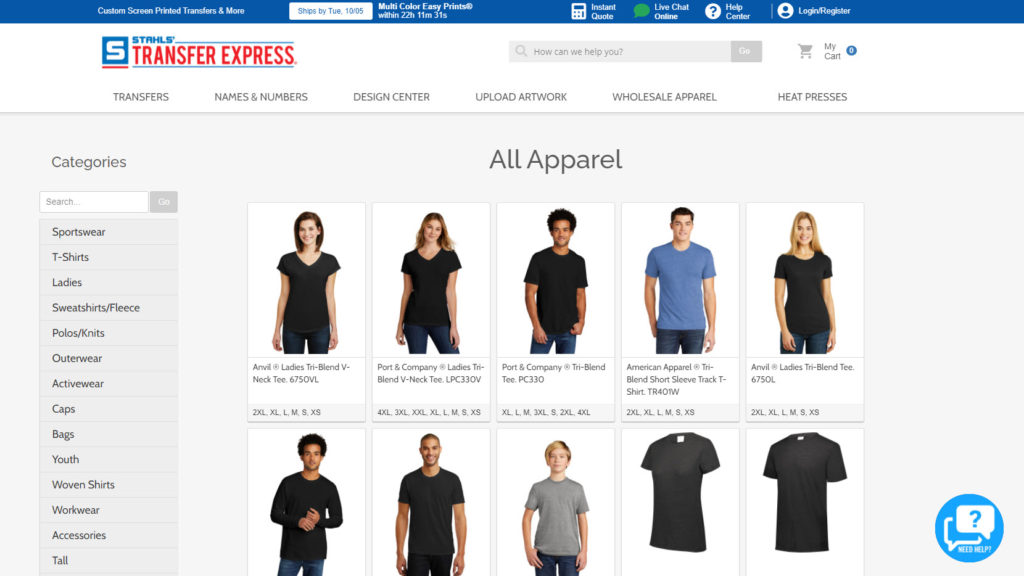
Tri-blends, though, can be tricky to print. We’ll show you how to do it and also some tips on keeping these shirts a retail-ready garment that your customers will love.
What is a Tri-Blend T-Shirt?
Tri-blend t-shirts are made of a fabric made from three different materials, typically cotton, polyester, and rayon.
Most people have heard of cotton and polyester, but rayon is less common.
Like polyester, rayon is a synthetic fiber. Originally, it was made to be a substitute for silk.

It has a soft, smooth finish and has some stretch to it.
By itself, rayon would not be very good for t-shirts. But when you combine it with cotton and polyester, these three come together to make a lightweight, super soft, and stretchy garment.
People love wearing tri-blends because they are a comfortable and fashionable garment.
T-shirts and hoodies are both popular apparel items found in the tri-blend materials.
However, with this beloved fabric comes some printing challenges.
What Makes Tri-Blends Hard to Print?
Tri-blends can be a little tricky to print on.
It’s not all too difficult, but there are some considerations that you may need to take into account for a successfully printed tri-blend t-shirt.
Scorching
Tri-blends contain a high amount of polyester and rayon. Because of this, these types of garments can be heat sensitive.
To print on tri-blends using a heat press, you’re going to want to use a heat transfer that applies at a low temperature to avoid scorching of the fabric.
Scorching can occur when the heat press is too hot for a particular type of fabric. When the fabric is pressed during the heat printing process, it will leave a sheen mark where the heat press platen pressed onto the shirt.
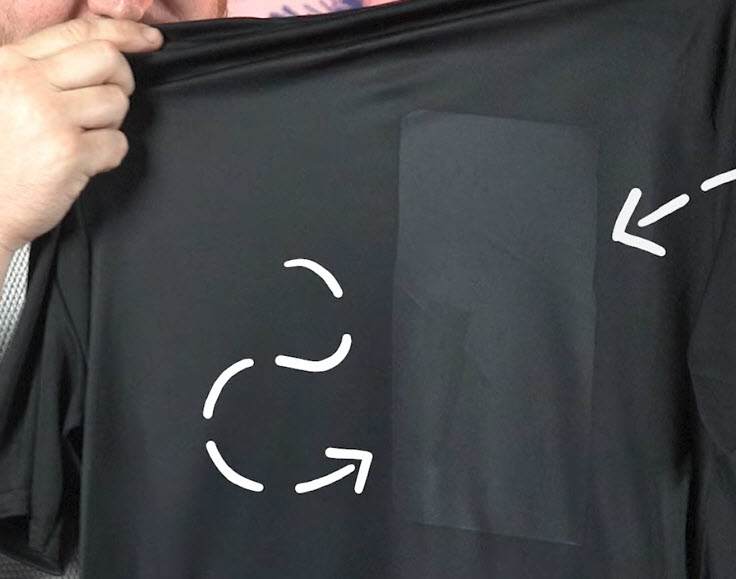
Heavy Inks/Artwork
Besides the heat sensitivity, we also mentioned that tri-blends have a super soft and lightweight feel.
A heavy ink or transfer type can quickly weigh down the soft nature of these shirts, leaving them with a less-than-desirable feel.
When decorating tri-blends, make sure to use a transfer with a soft hand.
This is also a great time to talk about artwork. Try to give the artwork lots of “show-through” areas. Avoid large areas of ink, no matter how soft the feel is.
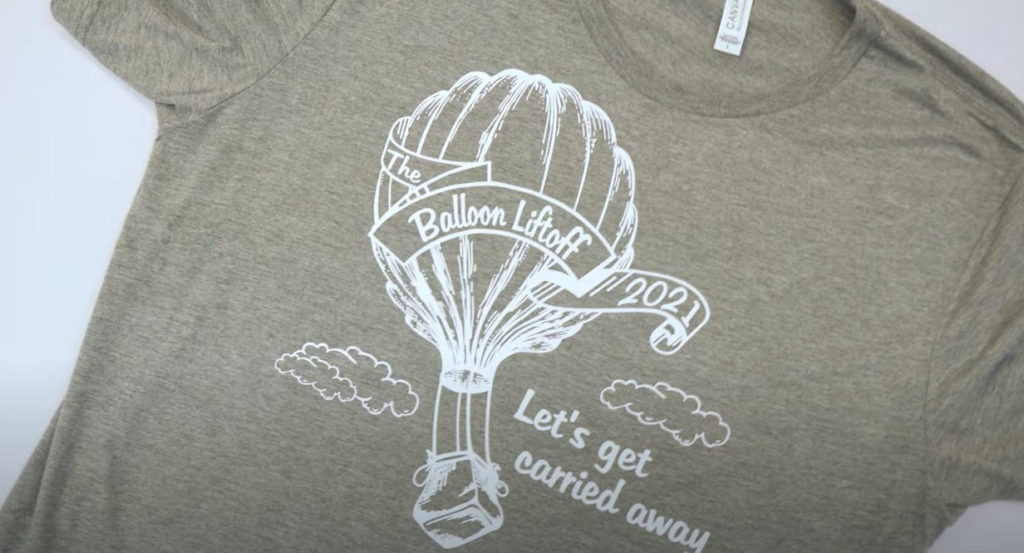
Solid areas of ink can make a shirt feel heavier when worn, with less breathability.
People love the tri-blend shirts because of how soft, lightweight, and comfortable they are. Keep the shirt soft and lightweight with a lighter-feeling print.
[Related Content: Tips to Get a “Soft Hand” on Your Apparel with Screen Printed Transfers]
Puckering
Another issue to watch for when printing on tri-blend apparel is puckering.
Since tri-blends have some stretch to them, make sure the garment is flat, but not stretched, on the heat press platen during printing.
A stretched out garment on the platen will retract to its normal size when removed from the platen. When this happens, the ink that was printed on the stretched garment will look wavy as the garment returns to its normal state.

Which Heat Transfer Type is Best for Tri-Blend Apparel?
Because of the printing hazards that come with tri-blends, you’ll want to choose the best heat transfer possible.
For 1 or 2 spot colors, that transfer is Goof Proof®.
Goof Proof is a screen printed transfer and was re-formulated to have an incredibly soft hand that applies as a low temperature of 325°-335°F, perfect for tri-blends.
Goof Proof also has a little stretch to it, so it will be able to keep up with the stretch of the apparel.
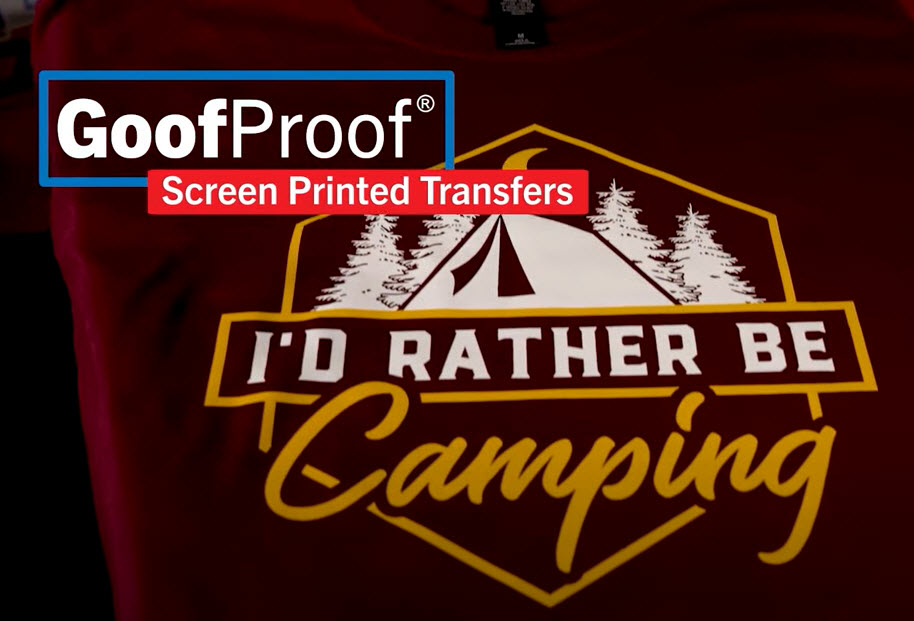
When you have 3 or more spot colors, or a full color graphic, your go-to heat transfer will be UltraColor® Soft.
UltraColor Soft has a low temperature application and has some stretch to it as well.
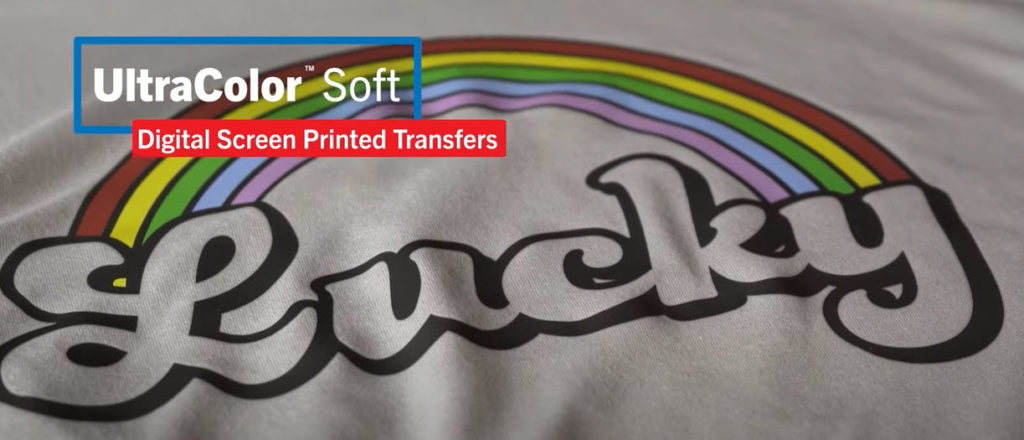
Extra Tip for Printing Tri-Blends
Now that we know which transfers are best for printing on tri-blends, and things to watch out for during printing, here is another tip to help.
Use a Quick Slip Pad Protector to reduce the puckering mentioned above. This heat press accessory helps by creating a sleek surface on your heat press platen.
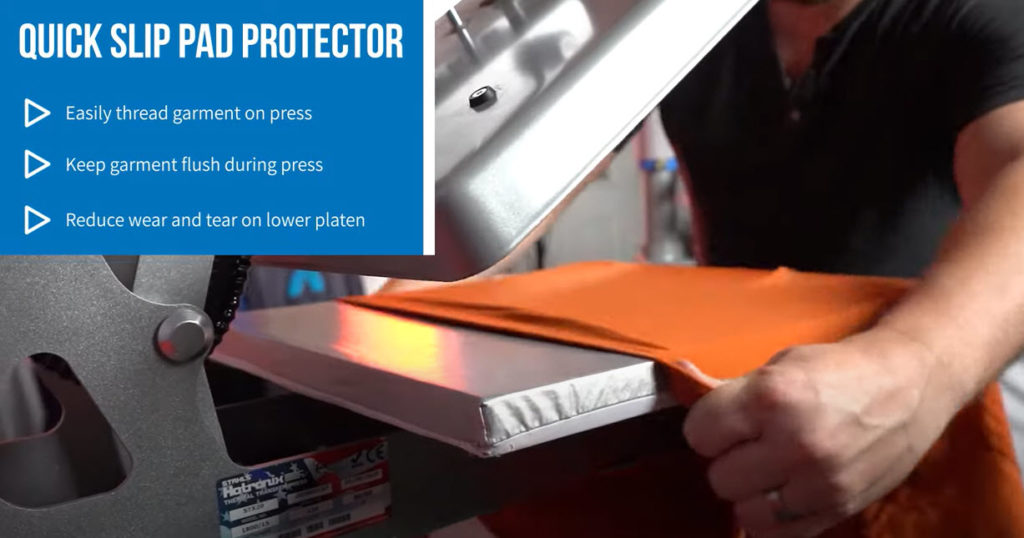
Without the Quick Slip Pad Protector, the silicone pad on your lower platen can “grip” the shirt easily. This can cause your shirt to get pulled or skewed when adding the shirt onto the press.
When you have the Quick Slip Pad Protector on, the shirt does not tug on the lower pad. The smooth surface allows the shirt to slide on easily without being stretched or pulled in any direction.
Summary: Printing on Tri-Blends
Let’s summarize and go over what we covered for printing on tri-blend apparel:
- Tri-blends are made of a high percentage of synthetic fibers, such as polyester and rayon. Both of these can be heat sensitive, so you’ll want to decorate with a heat transfer that applies at a lower temperature.
- Goof Proof screen printed transfers are great for heat printing on tri-blends. These transfers have a low temp application setting, between 325-335°F.
- People love tri-blend shirts because they are lightweight, soft, and comfortable. When decorating tri-blends, try to keep the printing as lightweight as possible to keep the shirt soft and comfortable.
- Your artwork can help keep the print soft and lightweight. Make sure to utilize show-through areas in your design, instead of having large areas of ink.
- When printing tri-blends, make sure your shirt is not being tugged or stretched on the press, causing it to be distorted. This can cause puckering issues after the shirt is printed.
